Connecting with the past
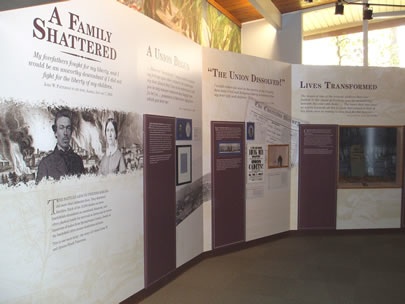
This past weekend I took a short drive out to the Chancellorsville Battlefield Visitors Center to acknowledge the 149th anniversary of the Battle of Chancellorsville (May 1-3, 1863). In addition to running an excellent film on the engagement (written by our friend John Hennessy), the CBVC museum also features some wonderful artifacts, dioramas and exhibits.
This week also marks the 148th anniversary of the Battle of the Wilderness (May 5-7, 1864). As The Wilderness Battlefield does not have its own Visitors Center, the CBVC also doubles for it.
One of the new installations (also written by John and our film-friend Donald Pfanz) tells an exceptionally tragic story from the Wilderness. The central character, John Williams Patterson, was a colonel of the 102nd Pennsylvania Volunteer Infantry who was killed May 5, 1864. According to the exhibit Patterson died the day after returning to camp from leave, and one day before his 29th birthday. He was shot as he led the regiment against attacking Confederates at the intersection of the Brock and Orange Plank roads. His body was left on the field as the regiment fell back, but was retrieved the next day.
Patterson was first buried at the 6th Corps field hospital. In 1865 his body was moved to Wilderness Cemetery No. 2, near where he received his fatal wound. In 1869, when the cemetery was emptied for transfer of the bodies to Fredericksburg, Patterson’s was taken north to Pennsylvania and reburied in the Southside Cemetery. (The preserved grave marker that is on display had also arrived in Pittsburgh with the body. The board reads, in black ink, “Col. Jno. W. Patterson, 102 Pa., Killed May 1864.”)
The exhibit is titled “A Family Shattered” and features photographs, letters and other items preserved by Patterson’s descendants. These include an 1861 recruiting poster; two flasks; a bullet that apparently passed through Patterson’s chest at the Battle of Fair Oaks and a poster from the Orphan’s Court, advertising the sale of the Patterson home when his death left his wife and children destitute.
The loss of Col. Patterson financially devastated his family, leaving them in near-poverty. His wife, Almira, had a widow’s pension of about $360 per year. Although Patterson had owned his house free and clear, the Allegheny County, Pa., Orphans’ Court compelled Almira to sell it in March 1865 to provide funds to support her and her three young children.
 William A. Phillis III, a descendant of John Williams Patterson wrote an excellent study of his great-great grandfather that was published in the Wilderness Dispatch Vol. 8 No. 2 Summer 2003. In it he writes:
William A. Phillis III, a descendant of John Williams Patterson wrote an excellent study of his great-great grandfather that was published in the Wilderness Dispatch Vol. 8 No. 2 Summer 2003. In it he writes:
Colonel John Williams Patterson of the 102nd Pennsylvania Infantry (Wheaton’s Brigade, Getty’s Division of the VI Corps) was killed at the corner of Brock Road and Orange Plank Road on May 5th, 1864. Col. William H. Moody of the 139th Pennsylvania wrote of Col. Patterson’s death, "Col. John W. Patterson, of Pittsburgh, commanding the 102d, was shot dead on that day. Poor Patterson! I shook hands and spoke with him just before the advance was ordered, and a moment afterwards he received a bullet through the brains. May Heaven console his stricken widow and children. "‘After life’s fitful fever he sleeps well"‘.
Col. Patterson’s death was a disaster for his family. Almira Wendt Patterson, the widow of the colonel, was orphaned at age 12, widowed at 29 and her youngest child, Mary Richards Patterson, died of scarlet fever at the age of 6. Almira and John’s children, Fred Wendt Patterson (b. 1860) and Agnes Wendt Patterson (b. 1861) were made wards of the Orphans Court in Pittsburgh and the widow’s house and belongings were sold by the court. The widow lived on a Widow’s Pension until she died in 1908 and was buried in New Brighton, Pennsylvania in a grave marked "Almira Patterson, Wife of Colonel John W. Patterson". (More here)
On a side-note, my Revolutionary War readers may be interested to know that Patterson came from a long line of ancestors who had served the military in the Revolution, War of 1812 and the French and Indian War. (List here)
I am particularly taken with this display, not because there is a tie to my hometown, but due to the fact that this is an example of the kinds of exhibits that we need more of. Far too many museums feature ‘nameless’ photos of soldiers without the detailed story behind them. This exhibit allows the visitor to directly connect with the man in the image, as well as his family. We not only see what his experiences were in the war, but also the repercussions of his death on the home front and how it affected his wife and children. It magnifies the tragedy of the Civil War and gives us much to ponder during the Sesquicentennial.
I highly recommend making a visit to the Chancellorsville Battlefield Visitors Center to see this unique and touching exhibit. The Pattersons' story is one that was repeated thousands of times over the course of the Civil War. This is the history that we should labor to preserve and present. I also recommend visiting the FSNMPS blog Mysteries and Conundrums for more stories like that of John Williams Patterson.
Photos: National Park Service
Battlefield Baseball
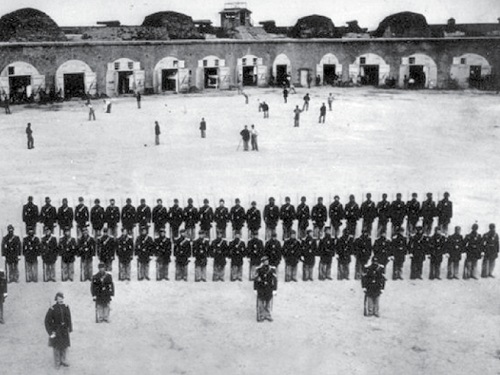
This photograph is believed to be one of the only ones in existence to have
captured a military baseball game during the Civil War. It features soldiers of
Company G, 48th New York State Volunteers playing a game at Fort Pulaski,
Georgia. (Courtesy of Fort Pulaski Military Park)
As I’m in a fully-focused baseball state-of-mind in preparation for the release of You Stink! Major League Baseball’s Terrible Teams and Pathetic Players I thought that I would share an article on the game of baseball during the Civil War. I originally wrote a much shorter form of this piece for Baseball-Almanac and later penned an expanded feature-length version for Civil War Historian magazine. My early work as a baseball historian was actually what led to me becoming a published author. I am now in the process of developing a talk based on You Stink! as my co-author Eric Wittenberg and I plan to do speaking engagements together (whenever possible) as well as apart. Enjoy...
It is considered America’s National Pastime, but far more than just a mere sporting event, baseball has become a major part of the American consciousness. In their book “The Pictorial History of Baseball,” John S. Bowman and Joel Zoss stated, “As part of the fabric of American culture, baseball is the common social ground between strangers, a world of possibilities and of chance, where ‘it’s never over till it’s over.’” Rooted in the American Spirit, rich in legends, folklore and history, it is ultimately a timeless tradition where every game is a new nine-inning chapter and every participant has the chance to be a hero.
One of the simplest and best explanations of the game’s impact on society was penned in 1866 when Charles A. Peverelly wrote, “The game of baseball has now become beyond question the leading feature of the outdoor sports of the United States ... It is a game which is peculiarly suited to the American temperament and disposition; ... in short, the pastime suits the people, and the people suit the pastime.”
During war, following natural disaster, or in the midst of economic hardship, this “game” has always provided an emotional escape for people from every race, religion and background who can collectively find solace at the ballpark. Therefore, it somehow seems fitting that the origins of modern baseball can be traced back to a divided America, when the country was in the midst of a great Civil War. Despite the political and social grievances that resulted in the separation of the North and South, both sides shared some common interests, such as playing baseball.
Although a primitive form of baseball was somewhat popular in larger communities on both sides of the Mason Dixon line, it did not achieve widespread popularity until after the start of the war. The mass concentration of young men in army camps and prisons eventually converted the sport formerly reserved for “gentlemen” into a recreational pastime that could be enjoyed by people from all backgrounds. For instance, both officers and enlisted men played side by side and soldiers earned their places on the team because of their athletic talents, not their military rank or social standing.
[NOTE: In 1857, a convention of amateur ball clubs was called to discuss rules and other issues. Twenty five teams from the northeast sent delegates. The following year, they formed the National Association of Base Ball Players, the first organized baseball league. The league’s annual convention in 1868 drew delegates from over 100 clubs. As the league grew, so did the expenses of playing. Charging admission to games started to become more common, and teams often had to seek out donations or sponsors to make trips.]
Both Union and Confederate officers endorsed baseball as a much-needed morale builder that also provided both mental and physical conditioning. After long details at camp, it eased the boredom and created team spirit among the men. Some soldiers actually took baseball equipment to war with them. When proper equipment was not available they often improvised with fence posts, barrel staves or tree branches for bats and yarn or rag-wrapped walnuts or lumps of cork for balls.
To this day, casualties from the American Civil War (620,000+) still exceed our country’s losses in all other military conflicts. It is estimated that the Union armies had from 2,500,000 to 2,750,000 men. The Confederate strength, known less accurately because of missing records, was from 750,000 to 1,250,000. From 1861 to 1865, both armies suffered tremendous losses and the subsequent damage to the country’s infrastructure cost millions to rebuild.
One of the most widely credited (and criticized) participants in the destruction was Union General William Tecumseh Sherman, who put it best when he said, “War is all Hell.” Confederate commander General Robert E. Lee echoed that sentiment when he stated that, “It is well that war is so terrible -- lest we should grow too fond of it.” Perhaps if either side could have foreseen the tragedy that would befall them, a compromise may have been offered in place of musket fire.
Unfortunately, a magnanimous and peaceful conclusion was not meant to be. For four years, a horrific conflict of epic proportions scarred the country’s land and traumatized her citizens. When it finally ended, nearly 2% of the country’s population was dead and millions of dollars in damage had devastated the country’s infrastructure.
Therefore, despite being a welcome distraction while on campaign, baseball was played on some of the most sacred and hallowed of soil that was baptized in the blood of thousands. In addition to the camps, forts and battlefields, contests were also held within the walls of some of the most despicable prison camps one could imagine. These “detention centers” were often death sentences in themselves, as soldiers died from starvation, exposure, disease and dysentery. Without a doubt, these “ballparks on battlefields” were the worst fields whose history goes far beyond that of the game.
The benefits of playing while at war went far beyond fitness, as often the teamwork displayed on the baseball diamond translated into a teamwork mentality on the battlefield. Many times, soldiers would write of these games in the letters sent home, as they were much more pleasant to recall than the hardship of battle. This was perhaps one of the earliest forms of sports journalism and the precursor to the “box-score beat writers” of the 20th-century.
Private Alpheris B. Parker of the 10th Massachusetts wrote, “The parade ground has been a busy place for a week or so past, ball-playing having become a mania in camp. Officers and men forget, for a time, the differences in rank and indulge in the invigorating sport with a schoolboy’s ardor.”
Another private writing home from Virginia recalled, “It is astonishing how indifferent a person can become to danger. The report of musketry is heard but a very little distance from us...yet over there on the other side of the road most of our company, playing bat ball and perhaps in less than half an hour, they may be called to play a Ball game of a more serious nature.”
Sometimes games would be interrupted by the call of battle. George Putnam, a Union soldier humorously wrote of a game that was “called-early” due to the surprise attack on their camp by Confederate infantry, “Suddenly there was a scattering of fire, which three outfielders caught the brunt; the centerfield was hit and was captured, left and right field managed to get back to our lines. The attack...was repelled without serious difficulty, but we had lost not only our centerfield, but...the only baseball in Alexandria, Texas.”
It has been disputed for decades whether Union General Abner Doubleday was in fact the “father of the modern game.” Many baseball historians still reject the notion that Doubleday designed the first baseball diamond and drew up the modern rules. Nothing in his personal writings corroborates this story, which was originally put forward by an elderly Civil War veteran, Abner Graves, who served under him. Still, the City of Cooperstown, NY dedicated Doubleday Field in 1920 as the “official” birthplace of organized baseball. Later, Cooperstown became the home of the National Baseball Hall of Fame.
Doubleday was an 1842 graduate of West Point (graduating with A.P. Stewart, D.H. Hill, Earl Van Dorn and James Longstreet) and served in both the Mexican and Seminole Wars. In 1861, he was stationed at the garrison in Charleston Harbor. It is said that it was Doubleday, an artillery officer, who aimed the first Fort Sumter guns in response to the Confederate bombardment that initiated the war. Later he served in the Shenandoah region as a brigadier of volunteers and was assigned to a brigade of Irwin McDowell’s corps during the campaign of Second Manassas. He also commanded a division of the 1st Corps at Sharpsburg and Fredericksburg as well as Gettysburg, where he assumed the command of the 1st Corps after the fall of General John F. Reynolds, helping to repel “Pickett’s Charge.”
Strangely, Doubleday’s outstanding military service is often forgotten, yet his controversial baseball legacy lives on. A report published in 1908 by the Spalding Commission (appointed to research the origin of baseball) credited Union General Abner Doubleday as being the “father of the modern game.” It stated, “Baseball was invented in 1839 at Cooperstown, NY by Abner Doubleday-afterward General Doubleday, a hero of the battle of Gettysburg-and the foundation of this invention was an American children’s game called “One Old Cat.”
Since then, Alexander J. Cartwright, Jr., a descendent of a British sea captain, has been designated as the game’s principal founder. According to sources at the Fort Ward Museum, “In 1842, at the age of 22, Cartwright was among a group of men from New York City’s financial district who gathered at a vacant lot at 27th Street and 4th Avenue in Manhattan to play ‘baseball.’ In 1845, they organized themselves into the Knickerbockers Base Ball Club, restricting the membership to 40 males and assessed annual dues of five dollars. The following year, Cartwright devised new rules and regulations, instituting foul lines, nine players to a team, nine innings to a game and set up a square infield, known as the ‘diamond’ with 90-foot baselines to a side, bases in each corner. He also drew up guidelines for punctuality, designated the use of an umpire, determined that three strikes constituted an out, and that there would be three outs per side each inning.”
Cartwright left the New York area in 1849 to travel. He was drawn by the Gold Rush and stories of adventures in the West. Along the way, he taught the game to Native Americans and mountain men he encountered, spreading interest in the fledgling sport west of the Mississippi. Cartwright died in Hawaii in July of 1892. However, for decades to come, it was Doubleday who remained in the hearts and minds of enthusiasts everywhere as baseball’s father.
To his credit, the general is said to have always demurred on assertions by others that he was the founder of the national game. Yet the legend persisted decades after his death. Regardless of falsely being credited as the sole “inventor” of the modern version, Doubleday was an evident student and fan of the game. Some historians believe that he helped to organize contests in camp while deployed, possibly prior to the Battle of Chancellorsville. At the time of the engagement in early May, some 142 years ago, Doubleday was in command of the 3rd Division, 1st Corps. According to John Hennessy, chief historian at Fredericksburg and Spotsylvania National Military Park, Doubleday was in the area from the summer of 1862 through the Battle of Fredericksburg in December, and the Battle of Chancellorsville in May 1863.
It has been determined that baseball was played “extensively” by Union soldiers in nearby Stafford County during that time, but there is no known documentation of Doubleday’s hand in games thereabouts. Perhaps a more realistic accolade would credit him with the promotion of the exercise as opposed to the invention of it.
Many of these contests were attended by thousands of spectators and often made front-page news equal to the war reports from the field. Ultimately, the Civil War helped fuel a boom in the popularity of baseball, evidenced by the fact that a ball club called the Washington Nationals was born in 1860--145 years before a Major League Baseball team was given the same name in the nation’s capital city of Washington D.C.
In 1861 at the start of the war, an amateur team made up of members of the 71st New York Regiment defeated the Washington Nationals baseball club by a score of 41 to 13. When the 71st New York later returned to man the defense of Washington in 1862, the teams played a rematch, which the Nationals won, 28 to 13. Unfortunately, the victory came in part because some of the 71st Regiment’s best athletes had been killed at Bull Run only weeks after their first game. One of the largest attendances for a sporting event in the nineteenth century occurred on Christmas in 1862 when the 165th New York Volunteer Regiment (Zouaves) played at Hilton Head, South Carolina with more than 40,000 troops looking on. The Zouaves’ opponent was a team composed of men selected from other Union regiments. Interestingly, A.G. Mills, who would later become the president of the National League, participated in the game.
According to George B. Kirsch’s 2003 book “Baseball in Blue & Gray,” John G.B. Adams of the 19th Massachusetts Regiment recounted that “base ball fever broke out” at a Falmouth encampment in early 1863 with both enlisted men and officers playing. The prize was “sixty dollars a side,” meaning the winning team paid the losers that sum. “It was a grand time, and all agreed it was nicer to play base than minie [bullet] ball.”
Adams reported that around the same time, several Union soldiers watched Confederate soldiers play baseball across the Rappahannock River in Fredericksburg. Nicholas E. Young of the 27th New York Regiment, who later became a president of baseball’s National League, played the game at White Oak Church in Stafford County. Union soldier Mason Whiting Tyler wrote home that baseball was “all the rage now in the Army of the Potomac.”
George T. Stevens of the New York Volunteers said that in Falmouth, “there were many excellent players in the different regiments, and it was common for one regiment or brigade to challenge another regiment or brigade. These matches were followed by great crowds of soldiers with intense interest.”
Although early forms of baseball had already become high society’s pastime years before the first shots of the Civil War erupted at Fort Sumter, it was the mass participation of everyday soldiers that helped spread the game’s popularity across the nation. In his 1911 history of baseball titled “America’s National Game,” Albert G. Spalding wrote, “Modern baseball had been born in the brain of an American soldier. It received its baptism in the bloody days of our Nation’s direst danger. It had its early evolution when soldiers, North and South, were striving to forget their foes by cultivating, through this grand game, fraternal friendship with comrades in arms.”
He added, “No human mind may measure the blessings conferred by the game of Base Ball on the soldiers of our Civil War. It calmed the restless spirits of men who, after four years of bitter strife, found themselves at once in a monotonous era, with nothing at all to do.”
During the War Between the States, countless baseball games, originally known as “Town Ball,” were organized in army camps and prisons on both sides of the Mason Dixon Line. Very little documentation exists regarding these games and most information has been derived from letters written by officers and enlisted men to their families on the home front. For the hundreds of pictures taken during the Civil War by photography pioneer Mathew Brady’s studio, there is only one photo in the National Archives that clearly captured a baseball game underway in the background. The image was taken at Fort Pulaski, Georgia and shows the “original” New York Yankees of the 48th Volunteers, playing a game in the fortification’s yard.
Several newspaper artists also depicted primitive ballgames and other forms of recreation devised to help boost troop morale and maintain physical fitness. Regardless of the lack of “media coverage,” military historians have proven that baseball was a common ground in a country divided and helped both Union and Confederate soldiers temporarily escape the horror of war.
“Town Ball” is a direct descendant of the British game of “Rounders.” It was played in the United States as far back as the early 1800’s and is considered a stepping stone toward modern baseball. Often referred to as “The Massachusetts Game” it is still played by the Leatherstocking Base Ball Club every Sunday in Cooperstown, New York. According to the game’s official rules as published by The Massachusetts Association of Base Ball Players, May 13, 1858: “Basetenders (infielders) and scouts (outfielders) recorded outs by plugging or soaking runners — a term used to describe hitting the runner (tagging them did not count) with the ball.”
Some additional “Town Ball” rules that are familiar to today’s standard “Baseball” game include: “The Ball being struck at three times and missed, and caught each time by a player on the opposite side, the Striker shall be considered out. Or, if the Ball be ticked or knocked, and caught on the opposite side, the Striker shall be considered out. But if the ball is not caught after being struck at three times, it shall be considered a knock, and the Striker obliged to run. Should the Striker stand at the Bat without striking at good balls thrown repeatedly at him, for the apparent purpose of delaying the game, or of giving advantage to players, the referees, after warning him, shall call one strike, and if he persists in such action, two and three strikes; when three strikes are called, he shall be subject to the same rules as if he struck at three fair balls.”
Army encampments were not the only locations to host “Town Ball” games. Prisons also held them as POW’s struggled to escape the hopelessness of their situation and combat the mind-numbing boredom that confronted them each day. One such institution was Salisbury Prison, which was the only Confederate jail located in North Carolina. The compound was established on 16 acres purchased by the Confederate government on November 2, 1861. The prison consisted of an old cotton factory building measuring 90 x 50 feet, six brick tenements, a large house, a smith shop and a few other small buildings.
Day-to-day life was tough, but prisoners had a large yard with plenty of room to move about. One of the favorite activities before the prison became overcrowded was baseball. So prevalent was the game at Salisbury that it was captured in an 1863 print. This illustration represents one of the earliest depictions of the game and recalls the days before overcrowding greatly diminished the camp’s living conditions. The illustration was penned by Otto Boetticher, a commercial artist from New York City, who had enlisted in the 68th New York Volunteers in 1861 at the age of 45. He was captured in 1862 and was sent to the prison camp at Salisbury. During his time there he produced a drawing that depicted the game in a more pastoral than prison-like setting.
A field reporter named W.C. Bates mentioned the presence of baseball at Salisbury in his “Stars and Stripes” publication. He added ”that we have no official report of the match-game of baseball played in Salisbury between the New Orleans and Tuscaloosa boys, resulting in the triumph of the latter; the cells of the Parish Prison were unfavorable to the development of the skill of the ‘New Orleans nine.’ Prisoner Gray mentions that baseball was played nearly every day the weather permitted. Claims have been made that these were the first baseball games played in the South.”
“Prisoner Gray” was actually Dr. Charles Carroll Gray, who indicated in his diary on July 4th that the day was “celebrated with music, reading of the Declaration of Independence, sack and foot races in the afternoon, and also a baseball game.” Gray fondly recalled that baseball was played almost every day. Sgt. William J. Crossley of Company C, 2nd Rhode Island Volunteer Infantry, described in his memoirs at Salisbury prison that “the great game of baseball generated as much enjoyment to the Rebs as the Yanks, for they came in hundreds to see the sport.”
More than a decade after the Civil War ended, the National League was developed. Coincidentally, it was the same year that General George Armstrong Custer was killed, along with two hundred and sixty-four Union Calvary troopers, after engaging Indian warriors at Little Bighorn. The year was 1876, and the National League of Professional Baseball was formed with an eight-team circuit consisting of the Boston Red Stockings, Chicago White Stockings, Cincinnati Red Legs, Hartford Dark Blues, Louisville Grays, Philadelphia Athletics, Brooklyn Mutuals and St. Louis Browns. It has been reported that many members of the U.S. Calvary, most of them veterans of the Civil War, engaged in baseball games to pass the time while protecting the western territories. Some of them returned home to witness the likes of Ross Barnes of Chicago hit the first National League home run which was an inside the park variation. A Cincinnati pitcher named William “Cherokee” Fisher served up that historic pitch.
Regardless of its location, whether in prison camps or in the field, baseball provided an escape from the harsh realities of war and ultimately improved the morale of troops who were obviously homesick, scared, and in some cases, traumatized by the horrors they had witnessed on the battlefield. After the war ended, many men from both sides returned home to share the game that they had learned near the battlefield. Eventually organized baseball grew in popularity abroad and helped bring together a country that had been torn apart for so many years.
Today, over a century later, baseball is still a popular American institution and remains a testament to both “Billy Yank” AND “Johnny Reb” who laid down their muskets to pick up a ball and help to establish a National Pastime. Perhaps it was Walt Whitman, one of America’s most prolific poets, who correctly predicted how a game played with a stick would grow into one of our country’s most prized possessions. He wrote, “I see great things in baseball. It’s our game - the American game. It will take our people out-of-doors, fill them with oxygen, and give them a larger physical stoicism. Tend to relieve us from being a nervous, dyspeptic set. Repair these losses and be a blessing to us.”
Baseball during the Civil War was indeed a blessing, but the fields that hosted it were anything but. Even today it is far too easy for us to look back and forget the carnage that took place across the American landscape during the “Great Divide.” Each year, millions of tourists travel to our National Battlefield Parks to honor the memories of their fallen ancestors. When they arrive, everything is perfect. The grass is neatly trimmed and the markers are polished. The freshly painted cannons are all lined up neatly and the flags dance in the gentle breeze that greets each visitor. There is a sense of romance and pageantry that is virtually impossible to escape.
In truth, they are standing in the shadow of death. And it is this shadow that hangs over every field that witnessed America’s War Between the States. Some were battlefields, and some were ball fields. Unfortunately most were killing fields too.
Sources:
Adams, J.G. B. Reminiscences of the 19th Massachusetts Regiment. Boston: Wright and Porter, 1899.
Aubrecht, Michael A., “Baseball and the Blue and Gray,” Baseball-Almanac. Pinstripe Press: 2004.
Fort Ward Museum. “Civil War Baseball: Battling on the Diamond.” Fort Ward Museum and Historical Site webpage.
Frommer, Harvey. “Primitive Baseball: The First Quarter Century of the National Pastime.”
Kirsch, George B., “Bats, Balls and Bullets: Baseball and the Civil War,” Civil War Times Illustrated. Vol. XXXVI, No. 2 (May, 1998).
Kirsch, George B. Baseball in Blue & Gray: The National Pastime During the Civil War. Princeton, NJ: Princeton University Press, 2003.
Millen, Patricia, “ From Pastime to Passion: Baseball and the Civil War,” Heritage Books (January 2001).
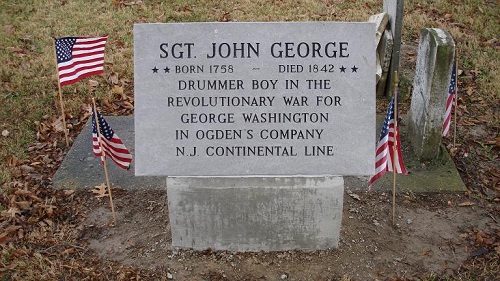
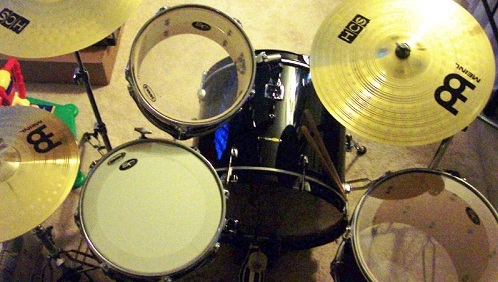







 William A. Phillis III, a descendant of John Williams Patterson wrote an excellent study of his great-great grandfather that was published in the Wilderness Dispatch Vol. 8 No. 2 Summer 2003. In it he writes:
William A. Phillis III, a descendant of John Williams Patterson wrote an excellent study of his great-great grandfather that was published in the Wilderness Dispatch Vol. 8 No. 2 Summer 2003. In it he writes: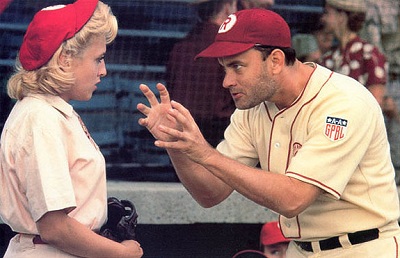
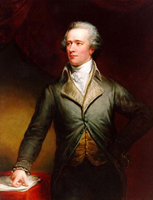 An excerpted version of my essay on the speculation surrounding Alexander Hamilton’s sexuality is appearing in the May-June issue of The Gay and Lesbian Review/Worldwide. Titled “Alexander Hamilton’s Smoking Gun,” this 3-page feature presents Hamilton’s rumored homosexuality and includes several curious letters written by Hamilton to his friend and confidant John Laurens.
An excerpted version of my essay on the speculation surrounding Alexander Hamilton’s sexuality is appearing in the May-June issue of The Gay and Lesbian Review/Worldwide. Titled “Alexander Hamilton’s Smoking Gun,” this 3-page feature presents Hamilton’s rumored homosexuality and includes several curious letters written by Hamilton to his friend and confidant John Laurens. 